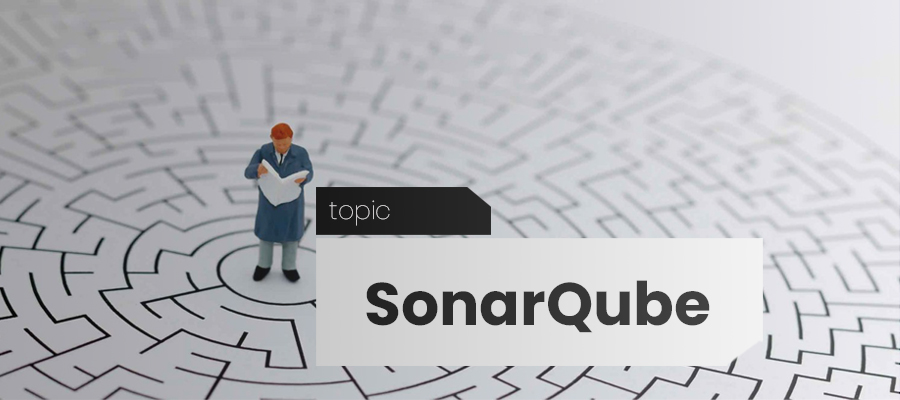SonarQube (formerly Sonar) is an open-source platform developed by SonarSource for continuous inspection of code quality to perform automatic reviews with static analysis of code to detect bugs, code smells, and security vulnerabilities on 20+ programming languages. SonarQube offers reports on duplicated code, coding standards, unit tests, code coverage, code complexity, comments, bugs, and security vulnerabilities.
SonarQube can record metrics history and provides evolution graphs. SonarQube provides fully automated analysis and integration with Maven, Ant, Gradle, MSBuild and continuous integration tools (Atlassian Bamboo, Jenkins, Hudson, etc.).
In the context of software engineering, software quality refers to two related but distinct notions:
- Software functional quality reflects how well it complies with or conforms to a given design, based on functional requirements or specifications. That attribute can also be described as the fitness for purpose of a piece of software or how it compares to competitors in the marketplace as a worthwhile product. It is the degree to which the correct software was produced.
- Software structural quality refers to how it meets non-functional requirements that support the delivery of the functional requirements, such as robustness or maintainability. It has a lot more to do with the degree to which the software works as needed.
Many aspects of structural quality can be evaluated only statically through the analysis of the software inner structure, its source code, at the unit level, the technology level and the system level, which is in effect how its architecture adheres to sound principles of software architecture outlined in a paper on the topic by OMG. But some structural qualities, such as usability, can be assessed only dynamically (users or others acting in their behalf interact with the software or, at least, some prototype or partial implementation; even the interaction with a mock version made in cardboard represents a dynamic test because such version can be considered a prototype). Other aspects, such as reliability, might involve not only the software but also the underlying hardware, therefore, it can be assessed both statically and dynamically (stress test).
Functional quality is typically assessed dynamically but it is also possible to use static tests (such as software reviews).
Historically, the structure, classification and terminology of attributes and metrics applicable to software quality management have been derived or extracted from the ISO 9126-3 and the subsequent ISO 25000:2005 quality model, also known as SQuaRE. Based on these models, the Consortium for IT Software Quality (CISQ) has defined five major desirable structural characteristics needed for a piece of software to provide business value: Reliability, Efficiency, Security, Maintainability and (adequate) Size.
Software quality measurement quantifies to what extent a software program or system rates along each of these five dimensions. An aggregated measure of software quality can be computed through a qualitative or a quantitative scoring scheme or a mix of both and then a weighting system reflecting the priorities. This view of software quality being positioned on a linear continuum is supplemented by the analysis of “critical programming errors” that under specific circumstances can lead to catastrophic outages or performance degradations that make a given system unsuitable for use regardless of rating based on aggregated measurements. Such programming errors found at the system level represent up to 90% of production issues, whilst at the unit-level, even if far more numerous, programming errors account for less than 10% of production issues. As a consequence, code quality without the context of the whole system, as W. Edwards Deming described it, has limited value.
To view, explore, analyze, and communicate software quality measurements, concepts and techniques of information visualization provide visual, interactive means useful, in particular, if several software quality measures have to be related to each other or to components of a software or system. For example, software maps represent a specialized approach that “can express and combine information about software development, software quality, and system dynamics”.
Static program analysis is the analysis of computer software that is performed without actually executing programs, in contrast with dynamic analysis, which is analysis performed on programs while they are executing. In most cases the analysis is performed on some version of the source code, and in the other cases, some form of the object code.
The term is usually applied to the analysis performed by an automated tool, with human analysis being called program understanding, program comprehension, or code review. Software inspections and software walk throughs are also used in the latter case.
SonarQube includes support for the programming languages Java (including Android), C#, PHP, JavaScript, TypeScript, C/C++, Ruby, Kotlin, Go, COBOL, PL/SQL, PL/I, ABAP, VB.NET, VB6, Python, RPG, Flex, Objective-C, Swift, CSS, HTML, and XML.[8] Some of these are only available via a commercial license.
SonarQube is available for free under the GNU Lesser General Public License. An enterprise version for paid licensing also exists, as well as a data center edition that supports high availability.[9][10]
SonarQube integrates with Eclipse, Visual Studio, and IntelliJ IDEA development environments through the SonarLint plug-ins, and also integrates with external tools like LDAP, Active Directory, GitHub, and others. SonarQube is expandable with the use of plug-ins.
The above is a brief about SonarQube. Watch this space for more updates on the latest trends in Technology.
